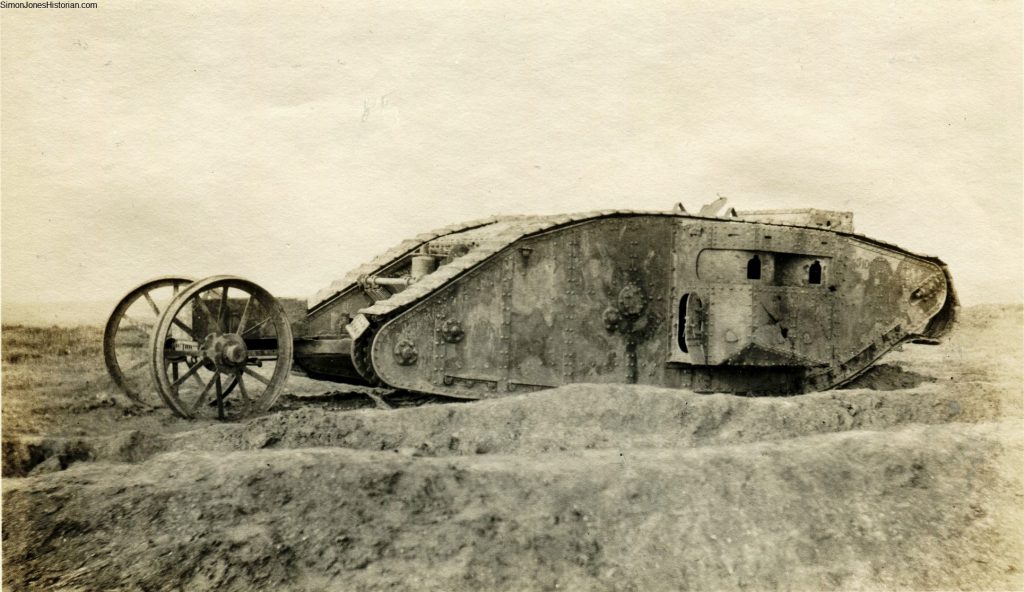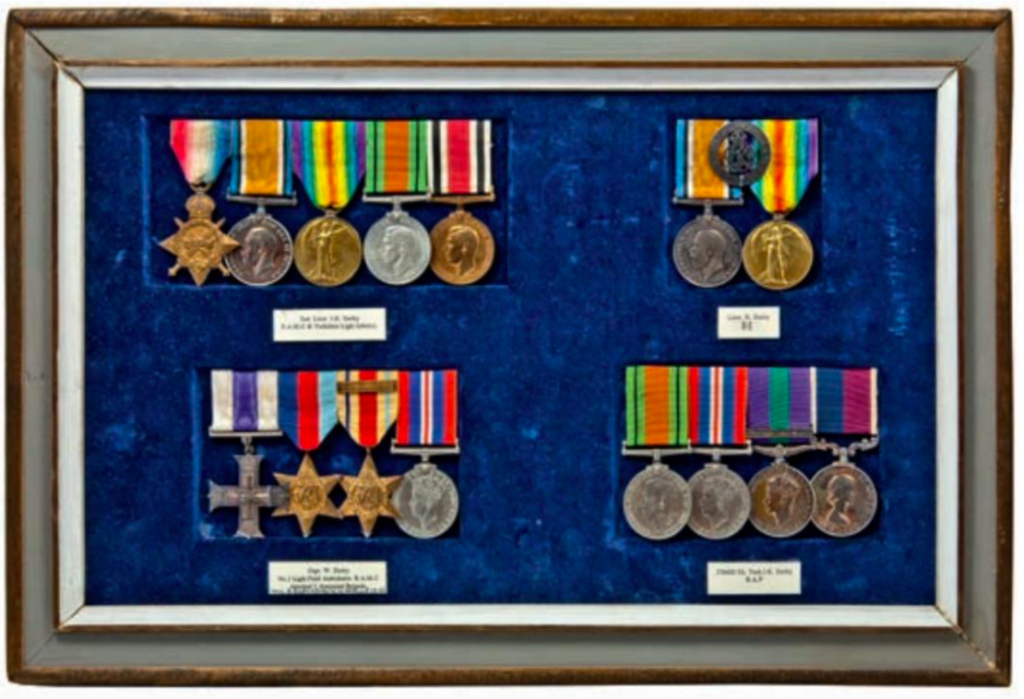Major Harold Darby DSO ASC was born in 1883. He was a surveyor by trade. He was commissioned in the Army Service Corp in the First World War, riding to the rank of Major and being made a DSO in June 1918.
Whilst formally under the Service Corps cap badge he was an early proponent of tank warfare.
He was involved at the Somme in 1916 and at Flers Courcelette on 15 September he was in command of the Tank D10, a ‘female’ tank in the first tank action of the war.
“Lieutenant Harold Darby, commanding one of these groups, was almost blinded by splintered glass shards when bullets shattered the periscopes on his tank. Later he and the crew had to abandon the machine after a shell broke one track. He rallied what men he could and they continued to fight as infantry.“1
The photograph below shows the tank (the letters ‘D10’ are just visible forward of the gun position):

He was also significantly involved at the Battle of Amiens and in the Second Somme of 1918. Part of the armoured and cavalry support deployed in support of the 47th (2nd London) Division (which included the Victoria Rifles):
“six Whippet Tanks of the 6th Battalion were to co-operate [with A and B Squadrons 1/1st Northumberland Hussars] under the command of Major Harold Darby, a veteran of the first tank assault in September 1916“2
His family have a significant record of military service to the Country in both world wars. His son William was a Captain with the RAMC and won the MC in the Second World War and his other son James Kidson Darby was a Chief Technician in the RAF and served in both wars. His brother James Kidson Darby was a subaltern with the West Yorks and then the RAMC and was wounded in the First World War. Their medals, less the DSO were sold by Spinks in 2015 (see below).
He was initiated into the Lodge in November 1920.

- Tanks and Armour in Modern Warfare by James Cary. Franklin Watts, 1966
- The History Of The Northumberland (Hussars) Yeomanry 1819 – 1919. Constable & Co 1924